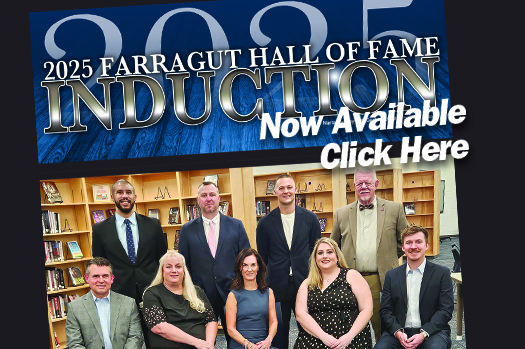It’s element(ary): it takes a ‘Village’
ORNL scientists from Village Green help discover new element, tennessine
Whenever middle school and high school students look at a Periodic Table and view the element tennessine nationwide, they may not know that two Village Green residents played a vital role in that recent discovery.
“From my personal point of view, I have an 8-year-old daughter, so for me to be able to say I was part of the discovery of a new element is off the charts,” said Julie Ezold, an Oak Ridge National Laboratory isotope program manager and one of “13 or 14” ORNL scientists who were directly involved in the process. “That is just something that is amazing when she studies science, that I can point to that and say, ‘I was part of that.’
“Not only part of tennessine, but I was also part of californium, the only two states on the Periodic Table, that I have a role in. For me personally, it’s amazing,” she added.
“For the team, it’s also, I would say, incredible. It’s a once-in-a-lifetime opportunity to be part of this kind of discovery.”
That includes Dr. Joe Roberto, ORNL’s associate laboratory director for science and technology partnerships who also resides in Village Green.
This discovery “is very significant,” Ezold said. “… If your discovery is on the Periodic Table, that Periodic Table is in every chemistry book in the world.”
Moreover, “Oak Ridge National Laboratory is going to produce wall-sized Periodic Tables to be mounted in every public middle [school] and high school in the state of Tennessee,” Ezold said.
Though saying about tennessine, “at this point we don’t have
a practical usage,” Ezold pointed to a practical usage years after another new element was
discovered.
“When Dr. Glenn Seaborg had discovered americium back in the late 1940s, there was no known application of it. But almost every home has a smoke detector in their home, and one of the isotopes of americium, americium 241, is used in those smoke detectors,” she said.
As for scientific cooperation, “it was Jim and Joe Hamilton at Vanderbilt University and Yuri Oganessian, who is the Russian scientist for this collaboration,” Ezold said.
“Jim’s role was predominantly in the coordination and the leading of our responsibilities, both in purifying the berkelium material and working with Krzysztof Rykaczewski for the detector systems that were used in detecting 117 [tennessine] and the 115, the newly discovered element moscovium. … named after the city of Moscow.”
“When element 117 goes through its decay process, it decays to element 115,” Ezold said about moscovium.
“We provided the data to help confirm that [115] discovery, so Oak Ridge National Lab was given credit for both 117 and 115 discoveries,” she added.
“… The discovery of these four new elements completes the seventh row of the Periodic Table, and that’s another reason this is a big deal.”
“The discovery of tennessine is an example of the potential that can be realized when nations come together to lend their unique capabilities toward a scientific vision,” Roberto said. “The discovery of tennessine is an example of the potential realized when nations combine their resources and work together in the pursuit of knowledge that could be of tremendous benefit to society.”
“This was a designed experiment between the United States and Russian scientists,” Ezold said. “It was designed specifically to look for super-heavy elements.
“Here at Oak Ridge National Laboratory we were responsible for making berkelium 249,” she added. “… My role was in production of the berkelium.”
For all the recent publicity, “The original discovery where we said, ‘yes we made it’ … was announced April 6, 2010,” said Ezold, who has been at ORNL for 24 years. “Then they had to do confirmation measurements, and those were in 2012. … Confirmation was [announced] May 1 of 2014. Then the International Union of Peer and Applied Chemists, which is the international body that says, ‘yes you have made a discovery of a new element,’ that occurred on Dec. 30 of 2015.”
“Then, after the IUPAC accepts the discovery and confirmation, you provide provisional names. Those provisional names were sent on June 8 of 2016. Then on Nov. 30 of 2016, everything was completely accepted ... by the international community.”
Tennessine, along with the three other discovered elements were then Ezold said.


